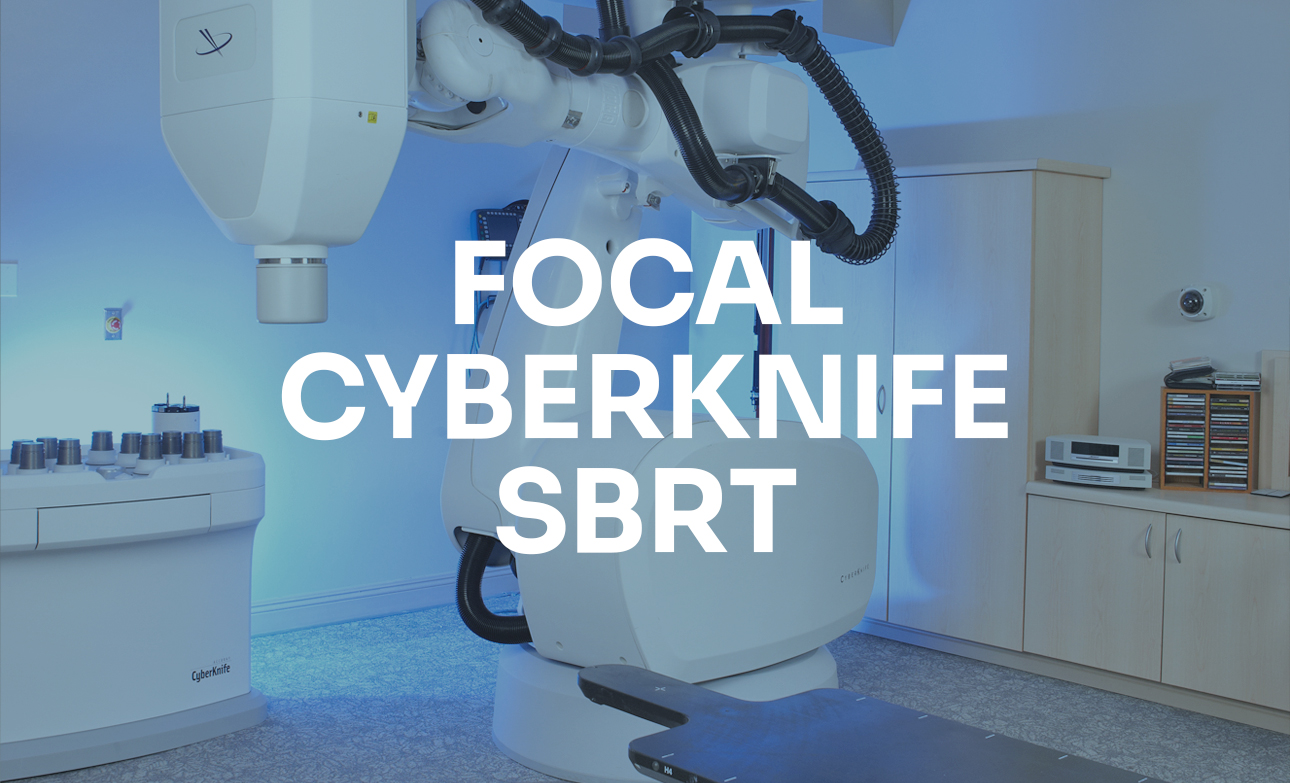This article highlights the pioneering work done with prostate CyberKnife SBRT by the radiotherapy team at Unio Specialty Care in San Diego, which began nearly 20 years ago and has evolved with advancing technology. Dr. Donald Fuller, principal investigator of CyberKnife prostate clinical trials since 2006, notes that the latest protocol modification aims to further reduce treatment-related toxicity by focusing only on the affected part of the prostate. This concept is known as “focal” treatment, contrasting with traditional “whole prostate” approaches. Although long-term data on the focal method is limited, initial results indicate significant quality of life (QOL) improvements, making focal CyberKnife prostate SBRT a promising option for selected patients.
From Innovation to Precision: The Evolution in Prostate CyberKnife SBRT
In the early days of CyberKnife technology, many patients were treated as part of a formal clinical trial to collect valuable data on its effectiveness. “Our prostate CyberKnife SBRT experience began in 2006,” explains Dr. Fuller. “We began using this platform to generate a very accurate and customized dose pattern, creating the unique capability to shorten the typical prior existing ‘two-month’ prostate radiotherapy course, all the way down to one week, by controlling the high dose volume precisely.”
Nearly 20 years and over 1,000 treated patients later, the results are clear. “Our CyberKnife SBRT experience has confirmed prostate cancer ablative efficacy with this technology that equals or exceeds that created by any other prostate cancer treatment modality, also with a competitively low incidence of serious treatment-related toxicity,” emphasizes Dr. Fuller.
Historically, CyberKnife SBRT targeted the entire prostate due to the common occurrence of multifocal disease. However, advancements in imaging now allow for a more focused approach, treating only the dominant intraprostatic lesion (DIL) while leaving other areas intact. Recent improvements in prostate MRI and PSMA PET/CT scanning have made accurate DIL identification possible.
Introducing Focal SBRT: A Cutting-Edge Approach to Minimizing Treatment-Related Toxicity
In 2021, Dr. Fuller updated the CyberKnife SBRT protocol to include FOCAL (DIL-only) treatment for select patients. This approach minimizes exposure to surrounding normal tissue, potentially reducing the already low toxicity of whole-prostate SBRT, by sparing even more bladder, urethra, rectal wall, and nearby nerve bundles. Dr. Fuller states, “Other focal technologies exist, but CyberKnife SBRT’s ability to ablate MRI-mapped tissues with sub-millimeter accuracy is unique.”
As the concept of FOCAL SBRT is very new, there are no long-term data with this approach. “This is an aspect that any interested patient needs to fully understand before selecting the FOCAL approach,” says Dr. Fuller. Due to this issue, this specific treatment strategy is most commonly performed under formal clinical trial research oversight, so that results are accurately tracked, allowing us to observe trends and make any necessary further adjustments, as rapidly as possible. Most CyberKnife SBRT patients at Unio’s Radiation Oncology division still receive whole-prostate treatment due to its long-standing efficacy record. However, some patients who understand the nuances of the focal approach may benefit from this more tissue-sparing technique.
The Unio FOCAL SBRT database is still preliminary, yet already shows remarkably lower treatment-related side effects versus historical experience. “Against the obvious benefit of lower side effects, we need to continue to map the efficacy of this approach over the much longer term. Our study of the effectiveness and quality of life (QOL) outcome of FOCAL CyberKnife prostate SBRT continues, and we remain enthusiastic regarding its longer-term potential to maintain effectiveness, while simultaneously greatly reducing the negative QOL impact that all prostate cancer patients naturally fear,” concluded Dr. Fuller.
About Unio Specialty Care - Radiation Oncology
With locations in North County (Escondido) and Central San Diego, Unio’s Radiation Oncology department boasts a team of highly skilled professionals dedicated to every aspect of cancer care. Unio’s Radiation Oncologists have been recognized as Top Docs by the San Diego County Medical Society for multiple years, reflecting their commitment to excellence. Unio offers state-of-the-art radiation therapy treatments, including traditional options (3D Conformal Radiotherapy (3DCRT), Image Guided Radiotherapy (IGRT), Intensity Modulated Radiotherapy (IMRT)) as well as the innovative CyberKnife SBRT, the only device of its kind in San Diego. At Unio Specialty Care, patients can expect cutting-edge technology and compassionate care tailored to individual needs, ensuring they have the best partner to guide them through the journey that lies ahead.
- By: Unio Specialty Care, Published: 11/19/24
- Medically Reviewed By: Donald B. Fuller, MD – 11/19/24

